Architect Jean-Christophe Petillault has designed a particularly space-saving version of a table in times of home office. The Flying Table slides to the ceiling after work via remote control.
When your own four walls suddenly have to be more than just a family retreat. Namely, a workplace, school, playground and gymnasium all in one. No matter how creative the multipurpose use, the private space quickly bursts at the seams. Unless you have invested in furniture that disappears at the push of a button. For example in the Flying Table by Parisian designer Jean-Christophe Petillault from JCPCDR architecture. His Flying Table creates enormous flexibility, not only in the home office.
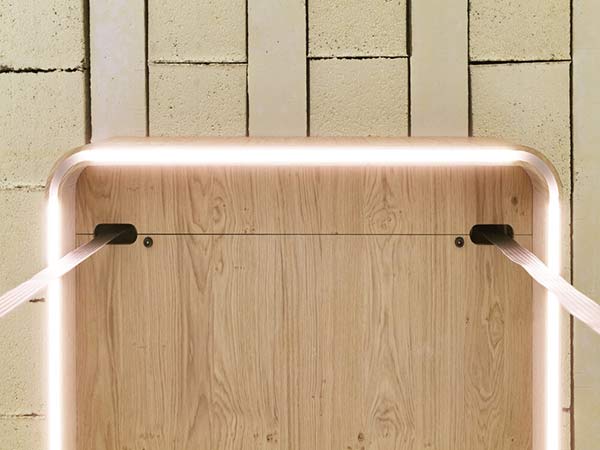
From the idea to the space miracle
Petillault got the idea for the furniture while working on various office renovation projects in Paris. A central issue was the flexible use of the furniture.
Due to the limited space in our city, it is very important that rooms remain versatile and can be used for different purposes. Meeting rooms, for example, are not always occupied, but take up a large part of the building plan and are often filled with furniture,
explains the designer.
A table that can be stowed away without much effort and as attractively as possible brings a previously unattained flexibility to every office – from the mobile Tiny Office to the open-plan complex.
I wanted to design a large table that could meet a variety of needs and adapt to different situations,
says Petillault.
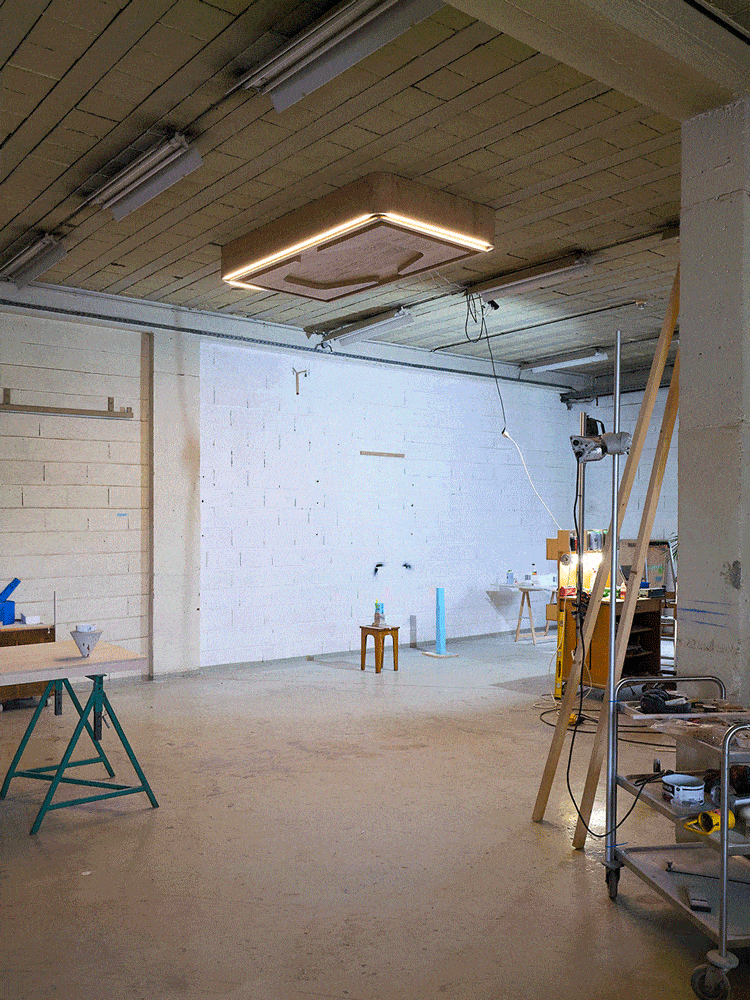
Depending on the chosen height, it can be used as a desk, meeting table, dining table or coffee table.
Low-Tech from everyday life
Even if the Flying Table suggests a certain airiness, it is anything but fragile. Petillault has designed a table made of solid oak, which is connected to a docking station on the ceiling by a pulling mechanism. The mechanism is controlled by a remote control, but smart technology is not (yet) in play here.
Instead, quite ordinary mechanisms from everyday life have provided the inspiration for the Flying Table – from the safety belt in the car to the curtain motor.
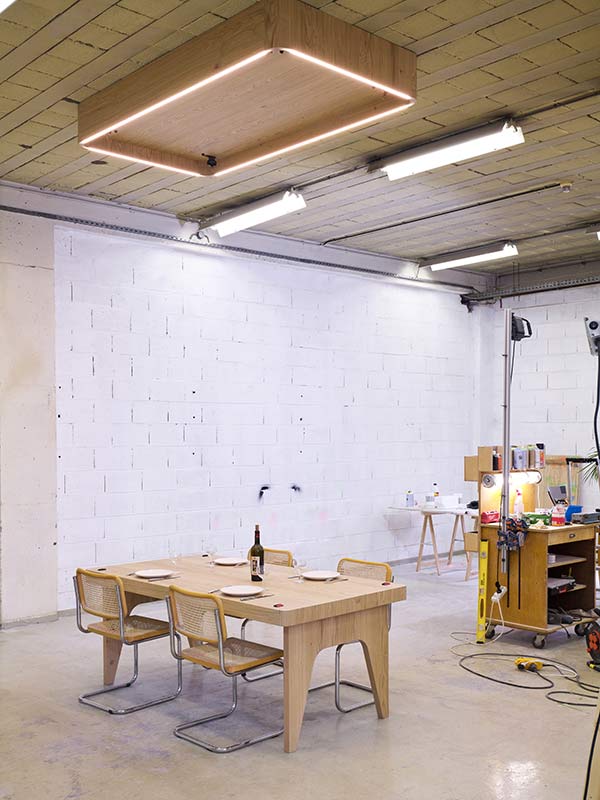
This is a table with entertainment value, it was designed as an everyday architectural object, versatile and functional,
says the architect.
The hidden table
The table is suspended from four safety belts, which are fastened to a lighted docking station on the ceiling. The belts are wrapped around a roller shutter motor that allows the table to be lowered to the desired height.
The oak table can be used hanging from the belt attachment or standing firmly on the floor via fold-out table legs. The belts are retracted from the docking station by remote control and extended again as required. If the room is to be used for other purposes, the table makes room and disappears to the ceiling.
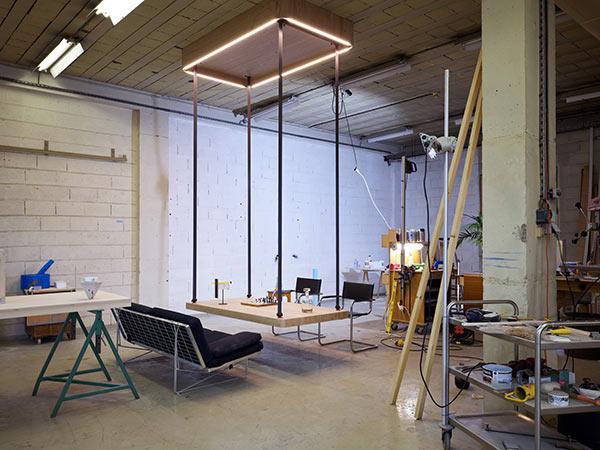
Space for photo shootings and parties
The lighting integrated into the ceiling element has both functional and aesthetic value and provides a slightly futuristic touch. The rounded light strip gives the solid wooden furniture a certain lightness.
This design allows a traditionally large and heavy piece of furniture to become a versatile, playful and contemporary object.
Jean-Christophe Petillault, architect
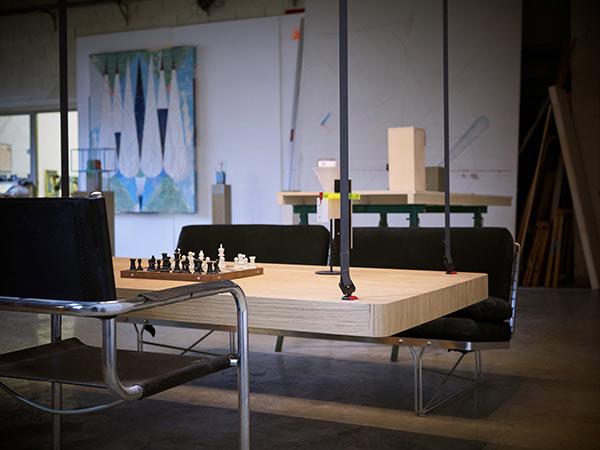
As destinations for the Flying Table he mentions living rooms, offices and workshops.
Basically, it can be used wherever a table is needed, but the space can then be used for other purposes: for children’s games, yoga, dance, photo shoots or parties.

Text: Gertraud Gerst
Photos: David Foessel, JCPCDR

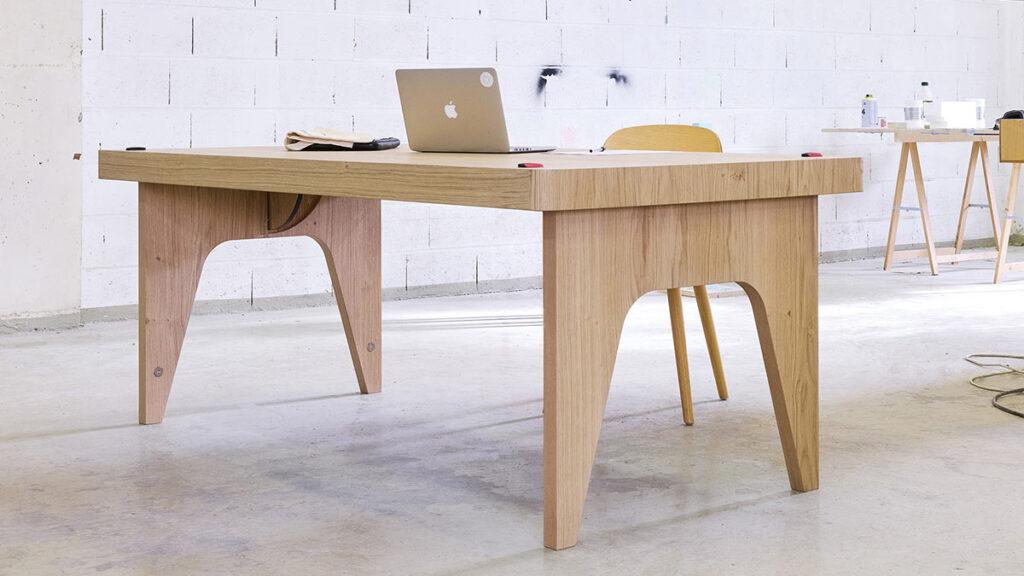
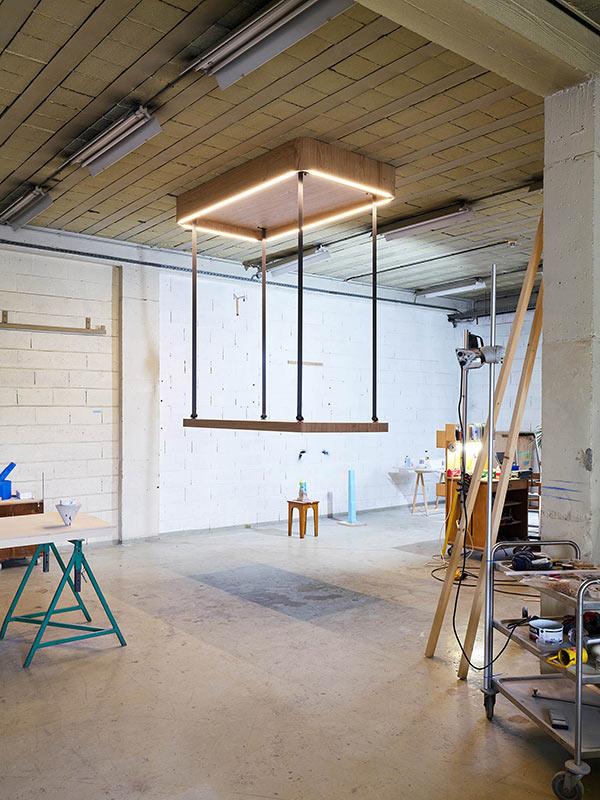
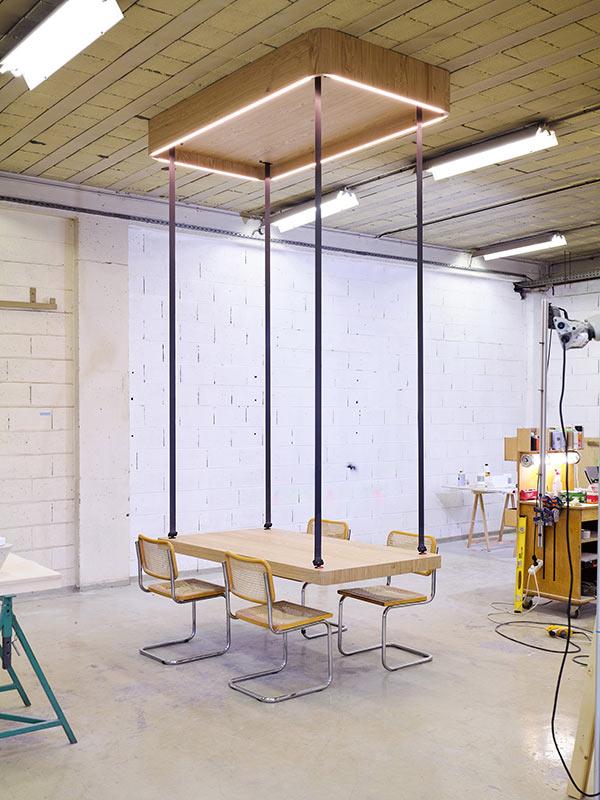
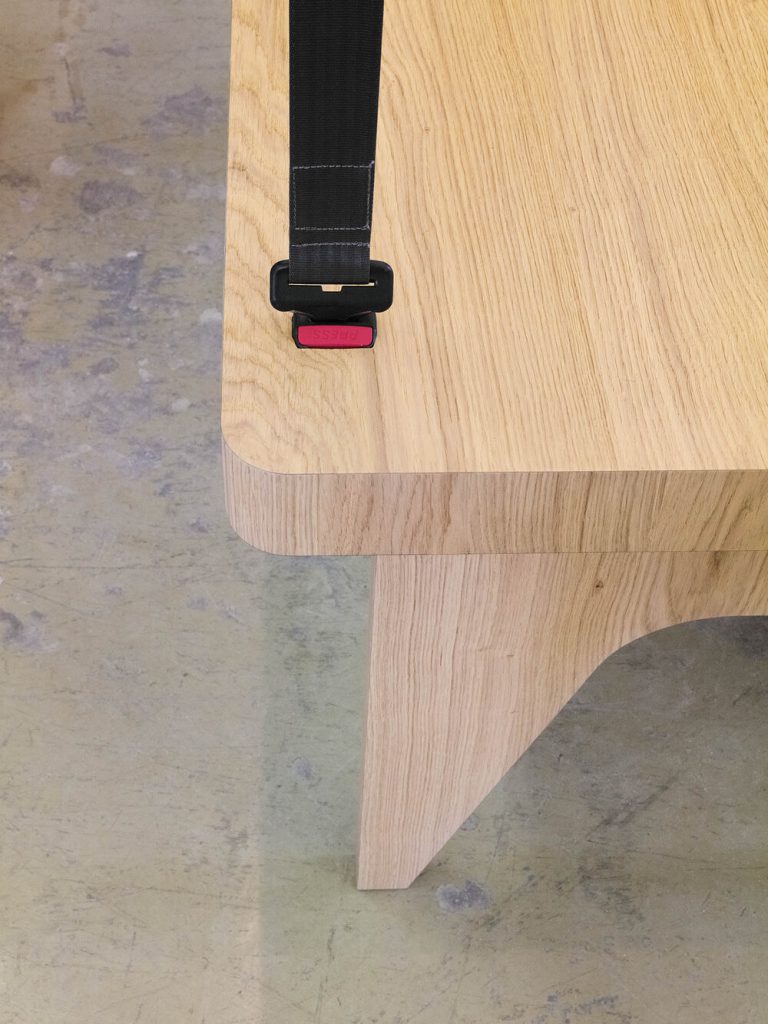
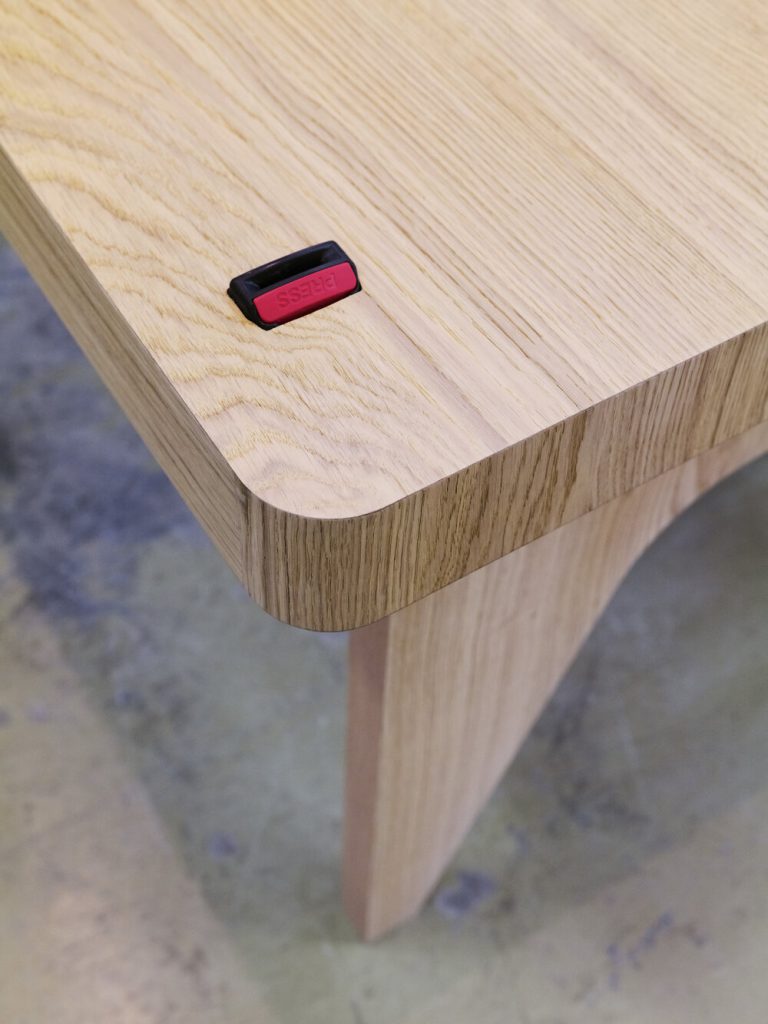
iThere are no comments
Add yours